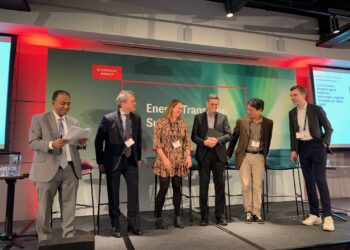 Michael Dell, CEO of Dell, predicts that meeting the forecasted explosion of AI demand growth will require a 10,000% increase in data centre capacity in the next 10 years. This number is mind-bogglingly large.
Michael Dell, CEO of Dell, predicts that meeting the forecasted explosion of AI demand growth will require a 10,000% increase in data centre capacity in the next 10 years. This number is mind-bogglingly large.
Power and Carbon Footprint Challenges in Data Centres
The implications for increased power requirements are all-too obvious. Data centres already account for perhaps 3% to 5% of global electricity demand. Let’s remember that the DC industry needs to halve its carbon footprint by 2030 in order to meet industry greenhouse gas emission targets.
The Overlooked Issue: Water Consumption in Data Centres
A second, major constraint around more data centre provision that has received less headlines is water consumption. A 15MW data centre can consume the same amount of water as 3 average-sized hospitals.
 So perhaps it’s no surprise that in Chile, which has been facing 15 years of drought conditions in some regions, an
So perhaps it’s no surprise that in Chile, which has been facing 15 years of drought conditions in some regions, an
environmental court partially reversed Google’s permit to build a $200 million data centre in Cerrillos, Santiago. The court told Google, “To incorporate the consideration of climate change’s effects in the evaluation of the water component (Central Santiago Aquifer), if appropriate, taking into account a possible modification of the cooling system of the servers associated with the project.”
In the UK, water companies with large data centre footprints have also been facing unprecedented demand for additional water supplies for new housing and commercial applications. Data centres that have been seeking to be supplied with 80 litres of water per second might be asked to get by with 10 litres per second. This water resources issue is going to command a lot of attention, alongside the difficulties with electricity grid connections.
In Chile, Google have switched their proposed data centre to air-cooling instead. In cases where AI servers may require 700W to 1,000W chips that run hotter and where rack densities can exceed 50kW/rack, air cooling may be insufficient to cool the data centre. Even where legacy air-cooling technology is adequate for a proposed data centre, the water that it would require may not be available.
In our experience at NovAzure of working with some of the leading innovators in the data centre industry, one solution to the water problem (and the power problem) can be found in liquid cooling with dielectric fluid. With precision liquid cooling, for example, water consumption can be reduced by up to 90%, depending upon the climate and data centre specifications. In a world where data centre capacity might need to increase 10,000% in the next 10 years, the NovAzure team is striving to support innovations that can make a big contribution towards achieving net zero.
One way in which NovAzure creates value for clients is in the creation of simple-to-use value calculators that model the projected impact of applying new technologies to improve total cost of ownership and reduce water, energy and carbon footprints. If you would like to understand how NovAzure might be able to help you with your challenge, then please reach out to Philip Cholerton at p.cholerton@novazure.com for a chat.





